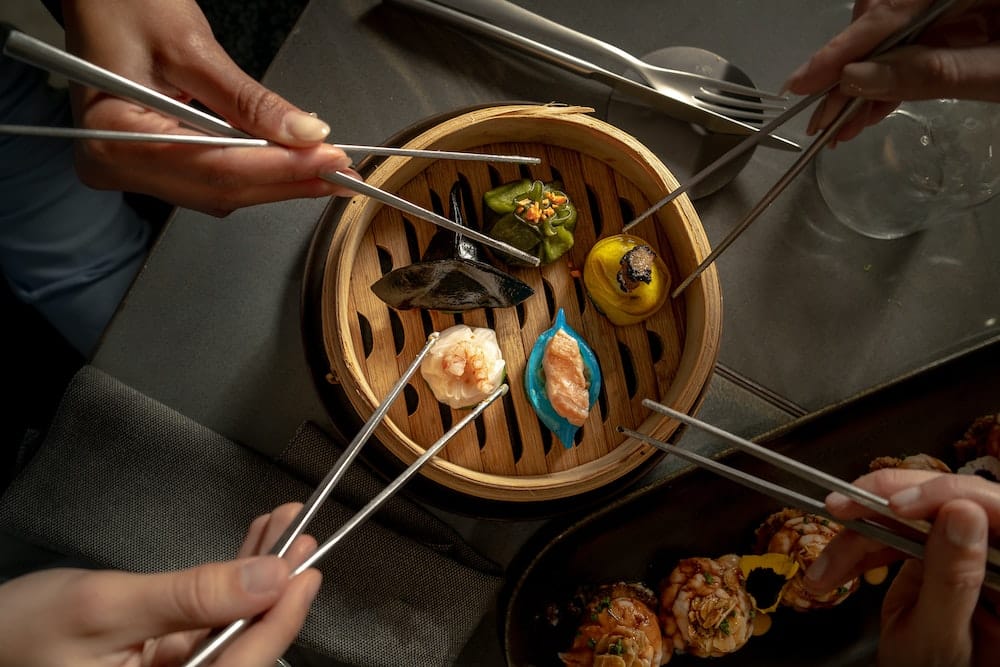What’s the Best Way to Combine Traditional Carpentry with Modern Design?

Joinery, the literal and figurative backbone of woodworking, has seen an evolution in recent years. This evolution, however, has not discarded the traditional techniques that have been the foundation of woodworking for centuries. Instead, it has found ways to fuse these age-old techniques with modern design elements. The result is a diverse range of furniture pieces that are as structurally solid as they are visually appealing.
The Art of Traditional Woodworking
Let’s take a step back and revisit the roots of woodworking. Traditional woodworking is a craft steeped in history, skills, and techniques passed down through generations. It involves the use of hand tools and joinery techniques to create functional and decorative items from wood.
En parallèle : How to Design an Allergy-Friendly Nursery with Non-Toxic Materials?
One of the most crucial aspects of traditional woodworking is joinery. Joinery is the art of joining pieces of wood together to create a more complex item, such as a table, chair, or cabinet. Different joints have different strengths and aesthetic qualities. Some of the most popular ones include dovetail joints, mortise and tenon joints, and lap joints. These joints are made using a variety of hand tools such as chisels, saws, and planes.
Traditional joinery techniques have stood the test of time for a reason. They offer strength and durability that often surpasses that of modern, machine-made joinery. But beyond that, they lend a sense of authenticity and craftsmanship to the pieces they create, qualities that have become increasingly sought after in our modern, mass-produced world.
Cela peut vous intéresser : What’s the Best Type of Greenhouse for a Small Urban Backyard?
Merging Tradition with Modern Design
The allure of traditional woodworking does not mean we have to forsake modern design. In fact, the unique characteristics of traditional joinery can be a significant asset in creating modern furniture pieces.
Modern design is characterized by simplicity, functionality, and clean lines. It often incorporates innovative materials and manufacturing techniques. But, at its core, modern design is about breaking down unnecessary ornamentation and focusing on the essential elements of a piece.
The first step to incorporating traditional woodworking into modern design is understanding the inherent properties of wood and how these can be employed to create pieces that are both functional and aesthetically pleasing. There’s an inherent warmth and natural beauty in wood that can be highlighted through thoughtful design and joinery techniques.
For instance, creating a table or a chair using a traditional mortise and tenon joint, but with a sleek, minimalist design, can result in a piece that feels both contemporary and timeless. The use of traditional joinery not only adds structural integrity to the piece but also serves as a visual element that adds depth and interest to the overall design.
Selecting the Right Tools for the Job
Your tools are your trusted partners in the woodworking process. While you may associate traditional woodworking with hand tools, modern woodworking shops often include a mix of hand tools and power tools.
Hand tools provide a level of control and precision that is essential for creating high-quality joinery. They allow you to manipulate the wood in ways that power tools may not, such as making delicate cuts or fine-tuning joints for a perfect fit. Additionally, they can add a unique, handmade touch to your pieces.
However, power tools can save time and effort, particularly when you’re working with larger pieces of wood or need to make multiple identical cuts. Machines such as table saws, bandsaws, and routers can be invaluable assistants in a modern woodworking shop.
The key is to find a balance between hand and power tools that works for you. It’s not about abandoning one for the other, but rather about using each tool to its best advantage.
Understanding the Role of Design
Design plays a significant role in how successfully traditional woodworking techniques can be integrated into modern pieces. A strong design concept serves as a roadmap for your woodworking project, guiding decisions about what types of wood to use, what joinery techniques to employ, and what tools will best execute your vision.
Good design also considers the functionality of the piece and the space it will occupy. It means thinking about how the piece will be used, where it will be located, and how it will interact with other elements in the room. This is particularly relevant in modern design, which often emphasizes open, flexible spaces and multifunctional furniture.
A well-designed piece of furniture can stand as a focal point in a room, drawing attention to the quality of the wood, the craftsmanship of the joinery, and the thoughtfulness of the design. It’s a testament to the enduring appeal of woodworking and the limitless potential of combining traditional techniques with modern design.
The Balance of Time and Craftsmanship
Traditional woodworking and modern design both require a significant investment of time. Traditional joinery techniques are often time-consuming, requiring a high level of skill and patience. Modern design, on the other hand, requires meticulous planning and execution to ensure that every element aligns with the overall design concept.
But this time investment is not wasted. Instead, it’s an investment in quality, durability, and beauty. It’s time spent honing your skills, understanding your materials, and creating pieces that are not just functional, but also meaningful.
In the end, the best way to combine traditional woodworking with modern design is by understanding and respecting both. It’s about appreciating the craftsmanship and durability of traditional joinery techniques, and the simplicity and functionality of modern design. It’s about choosing the right tools for your vision and taking the time to create something beautiful and enduring.
Harnessing the Beauty of Wood Tones and Grains
Let’s take a moment to appreciate the aesthetics of wood tones and wood grain. These are two inherent characteristics of wood that can massively influence the final look of a piece. The color, pattern, and texture of wood can add visual interest and depth, making your pieces feel more alive and natural.
Wood tones can vary greatly, from light and airy to rich and dark. Lighter tones like pine or maple can make a piece feel fresh and modern, while darker tones like walnut or mahogany can lend an air of sophistication and elegance. Mixing wood tones can also create a dynamic and interesting visual effect, but it’s important to do so thoughtfully to maintain harmony in your design.
The grain of the wood, which refers to the pattern resulting from the wood’s growth rings, greatly influences the texture and overall feel of a piece. A tight, straight grain can give a sleek, modern appearance, while a wild, swirling grain can add a touch of rustic charm. Understanding wood grain also affects how you work with the wood. For instance, the direction of the grain affects how you cut and sand the wood, and can impact the strength of different joinery techniques like dovetail and mortise and tenon joints.
Finally, don’t overlook the importance of finish in showcasing wood’s natural beauty. A clear finish can enhance the wood’s color and grain, while a tinted finish can alter the wood’s tone to better match other elements in a room. The finish can also protect the wood and prolong the lifespan of your piece.
The beauty of woodworking is that no two pieces of wood are exactly alike. Each piece has its own unique characteristics that can be highlighted through skilled craftsmanship and thoughtful design.
Infusing Traditional Woodworking into Your Living Room
The living room is often the heart of a home, a space where we gather, relax, and entertain. So, how can we infuse the beauty of traditional woodworking into modern living room design? It doesn’t have to be complicated. In fact, some of the most stunning pieces are those that marry simplicity with craftsmanship.
Consider a coffee table with clean, minimalist lines but constructed using traditional joinery techniques like mortise tenon joints or half-blind dovetail joints. Not only does this showcase the beauty of the wood and the skill of the craftsmanship, but it also creates a piece that is sturdy and durable.
Shelving units are another great way to bring wood into your living room. Mix wood types to create visual interest or stick with one dominant wood tone for a more cohesive look. Again, traditional joinery can be employed to enhance the piece’s strength and aesthetic appeal. Box joints, for instance, are not only strong but also create a visually pleasing pattern that can add to the overall design of the piece.
Even smaller items, like picture frames or lamp bases, can be an opportunity to incorporate traditional woodworking techniques into your living room design. These pieces might be small, but they can make a big impact in terms of adding warmth and character to your space.
Conclusion
In conclusion, the question is not whether to choose traditional woodworking or modern design, but rather how to thoughtfully combine the two. It’s about understanding and appreciating the unique qualities and possibilities of each approach. It’s about taking time to explore different woodworking techniques, to experiment with mixing wood tones, and to consider how each piece will fit into its intended space.
Remember, woodworking is not just about constructing a piece of furniture. It’s about creating something that is functional, beautiful, and meaningful. It’s about the time, effort, and love that goes into each cut, each joint, and each finishing touch. So, continue reading, continue learning, and continue crafting. With each project, you’ll grow not just as a woodworker, but also as a designer. And you’ll come to see that the best way to combine traditional carpentry with modern design is to do it with respect, thoughtfulness, and a touch of creativity.
